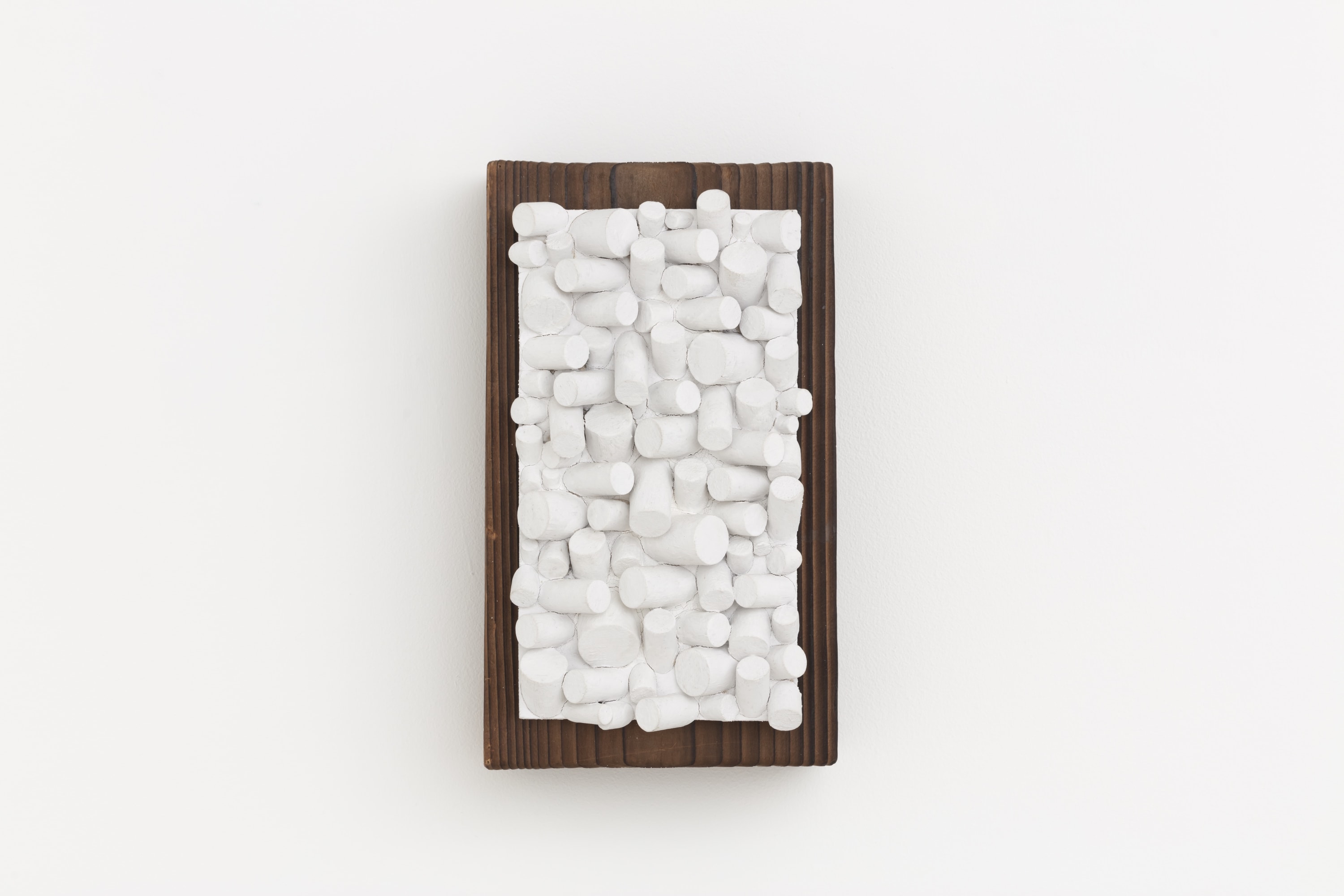Sergio Camargo’s polychrome wooden reliefs form an integral and iconic part of his practice, through which he probes the endless possibilities of geometric compositions. Experimenting with the direction, scale and concentration of wooden dowels in each relief, they at once carry the logical clarity and man-made precision of minimalist sculpture, and evoke myriad natural forms including crystals, corals, cumulous clouds, animal teeth, or long grass rushing in the wind.
Guy Brett, who wrote extensively on Camargo’s work throughout his career, encouraged a reading of each relief only secondarily as a sculptural form, and primarily as a base for studies of light, ‘a kind of white mould into which light seems to imprint its natural rhythm; it bears the traces of each slight transformation as clean morning light changes to plain afternoon light and later to elusive evening light. It is not there to tell us anything but to return, amplified, what we bring to it. The white solids are not felt as solids; the shadows and relations are felt, more strongly, and these are the immaterial traces of the element’s volume. Volume, in Camargo’s reliefs, though in reality it exists, is perceived as virtual.’
 Sergio Camargo, Untitled, c. 1970, polychrome wood mounted on wood block, 29 x 16.5 x 11 cm (11 3/8 x 6 1/2 x 4 3/8 in)
Sergio Camargo, Untitled, c. 1970, polychrome wood mounted on wood block, 29 x 16.5 x 11 cm (11 3/8 x 6 1/2 x 4 3/8 in)
 Anna Maria Maiolino, Untitled (from the series Vestigios [Vestiges]), 2003, India ink on Japanese paper. Framed: 43 x 34.5 cm (16 7/8 x 13 5/8 in), unframed: 23 x 31 cm (9 x 12 1/4 in)
Anna Maria Maiolino, Untitled (from the series Vestigios [Vestiges]), 2003, India ink on Japanese paper. Framed: 43 x 34.5 cm (16 7/8 x 13 5/8 in), unframed: 23 x 31 cm (9 x 12 1/4 in) Gego (Gertrud Goldschmidt), Untitled, 1969, Silkscreen print on cardboard, framed: 72.5 x 57.5 cm (28 1/2 x 22 5/8 in), unframed: 48 x 31.7 cm (18 7/8 x 12 1/2 in). Edition of 12 (unnumbered)
Gego (Gertrud Goldschmidt), Untitled, 1969, Silkscreen print on cardboard, framed: 72.5 x 57.5 cm (28 1/2 x 22 5/8 in), unframed: 48 x 31.7 cm (18 7/8 x 12 1/2 in). Edition of 12 (unnumbered)





![Anna Maria Maiolino Untitled (from the series Vestigios [Vestiges]), 2003 India ink on Japanese paper Framed: 43 x 34.5 cm (16 7/8 x 13 5/8 in) Unframed: 23 x 31 cm (9 x 12 1/4 in)](https://artlogic-res.cloudinary.com/w_600,c_limit,f_auto,fl_lossy,q_auto/artlogicstorage/cbprojects/images/view/54d814d6a7a05eea1b554f225a7799b5j.jpg)


